Specialized releases pro-race winning Roval Rapide Cockpit
Integrated rated Roval bar and stem has already seen multiple wins on bikes of Demi Vollering and Fabio Jakobsen this season
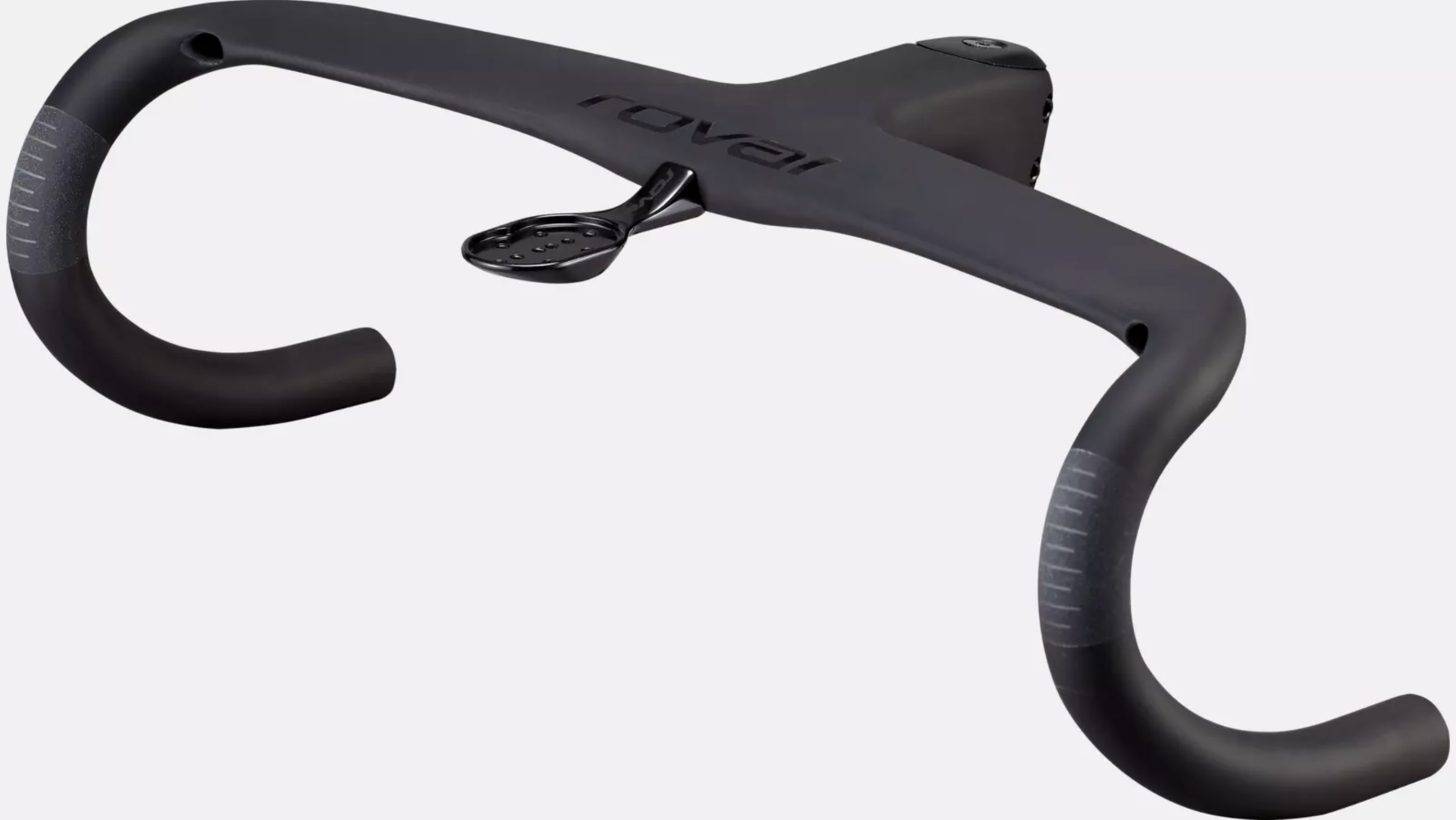

Specialized has finally released its new all-new Roval Rapide Cockpit. The new fully integrated one-piece carbon handlebar and stem is said to be the fastest cockpit the brand has ever made, with Specialized claiming a four watts saving over the previous generation's two-part setup.
Specialized also boasts a 50 gram weight-saving over its two piece Rapide and stem when used on an S-Works Tarmac SL7 . It doesn't come cheap though, retailing for $600/£475 - not including the Tarmac, obviously.
We say finally, as the likes of Fabio Jakobsen and Demi Vollering have already been using the new bars with the SD Worx rider already providing the new cockpit with 11 wins this season. Let's take a look at the new setup to see whether this new cockpit is worth the $600 upgrade.
Design and construction
Specialized says the design goal for the new setup was simple - create the fastest cockpit they have ever made, with no compromise to weight, comfort, or stiffness. So how have they performed against these metrics?
Until now, Specialized has not had an aero-oriented bar and stem setup, with the only one-piece offering being the Alpinist, as seen on the Specialized Aethos. The two-piece setup as seen on the Tarmac SL7 was designed with aero in mind, but Specialized says the cluster of hardware where the stem and bars join was the creator of unwanted turbulence.
The four watt saving versus the outgoing design has been achieved by completely getting rid of this cluster with a fully integrated design along with new aerofoil profiling. For reference, Specialized says the setup has been "optimized in clean air at speeds seen from long solo breakaways". Although a specific speed is not quoted, we estimate these savings to be seen at speeds in the region of 45kph.
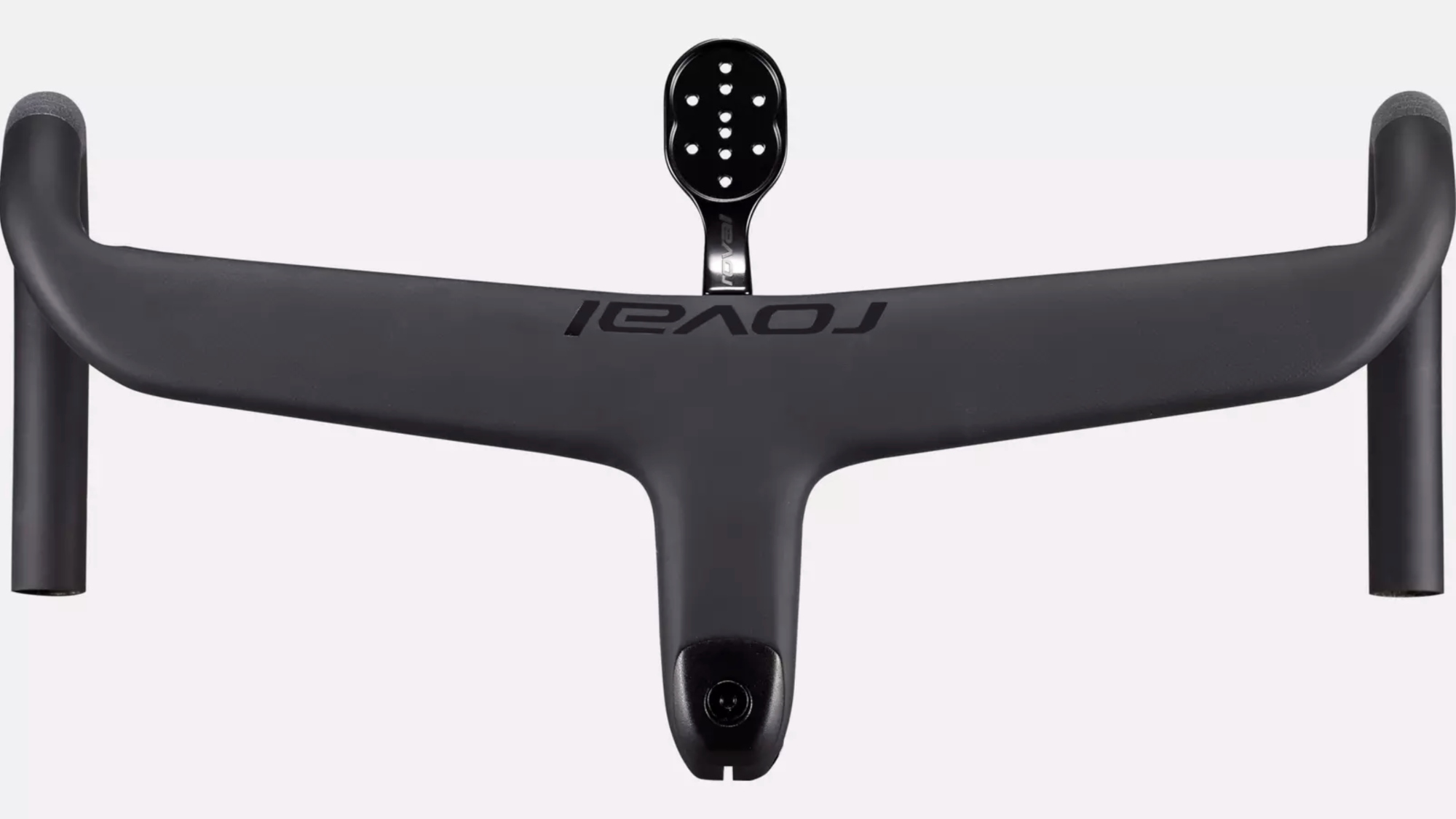
Roval Rapide Cockpit top down view
Specialized also claims that this saving is enough to give up to a 32cm advantage in a 250m sprint finish (once again speed not specified), which is certainly worth having. That said though, it's important we note that most sprint finishes are not wholly in clean air.
Get The Leadout Newsletter
The latest race content, interviews, features, reviews and expert buying guides, direct to your inbox!
As for the weight, Specialized is claiming 310 grams for a 100mm x 420mm setup. This significantly undercuts the likes of Pinarello's Most integrated carbon bar by around 50 grams - pretty impressive considering the setup costs little over half the Most Talon Ultra's $950 price tag.
The new cockpit does carry a 50 gram penalty compared to Roval's lightweight climbing focused Alpinist bar, but for racers, the weight penalty will almost certainly be off-set by the aero gains from the new bars.
Specialized says a premium high-modulus carbon fiber has been used to construct the new bars, which is said to have a higher stiffness-to-weight ratio than any two-piece setup that Specialized has made. It's hard to comment on stiffness without having had our hands on the new bars, but Soudal Quick-Step sprinter Fabio Jakobsen certainly seemed happy with them, saying the setup is "stiff and the fit is right. It gives me a lot of confidence”. It definitely didn't hold him back on stage two of Tirreno-Adriatico this year, where he took victory by the slimmest of margins.
All data quoted has been calculated by Specialized engineers. Although these numbers are calculated in-house, the team says they have used real-world power data, as well as CdA (air resistance coefficient) numbers and testing from the Specialized 'WinTunnel', the brand's in house wind tunnel.
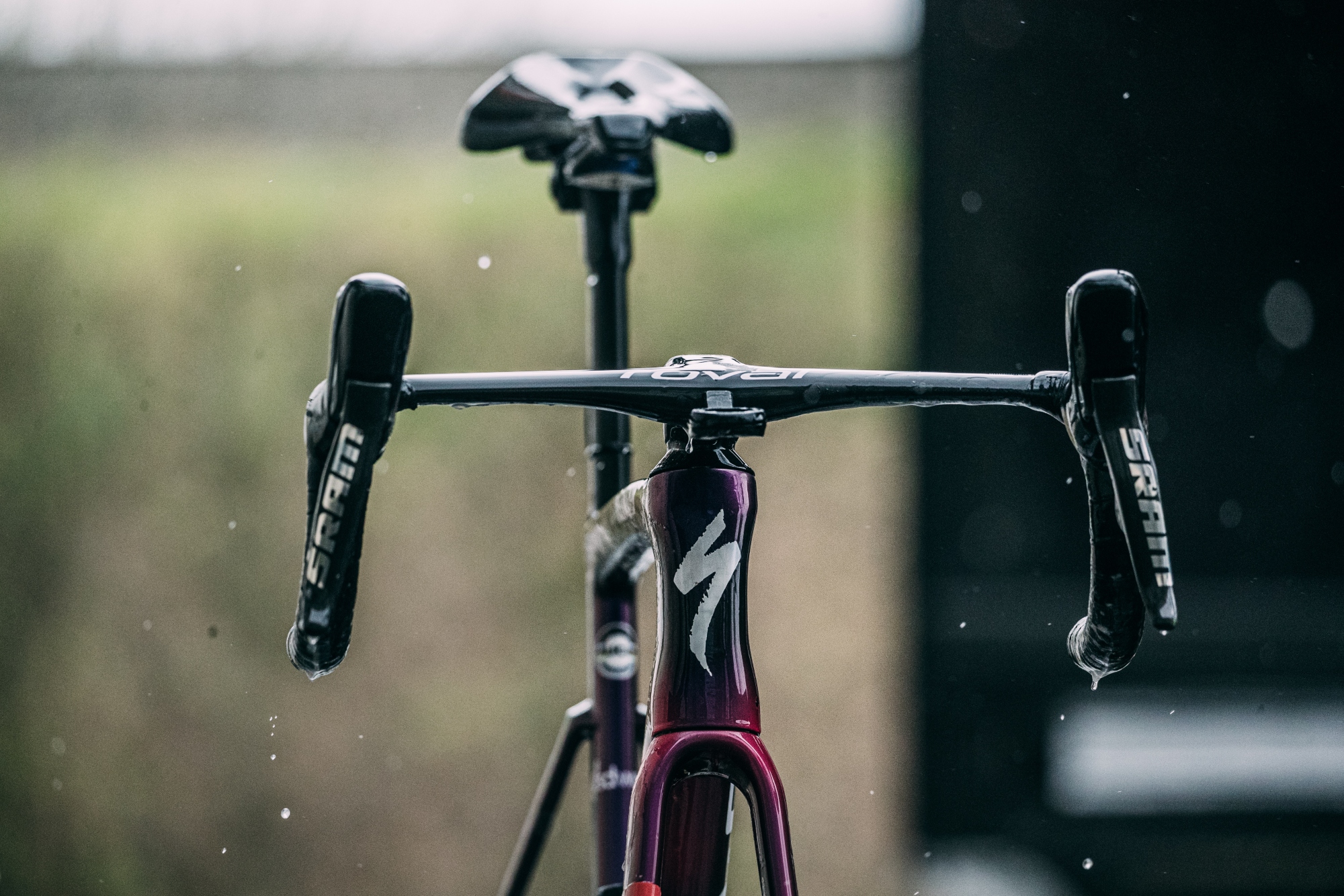
Demi Vollering's 2023 winning machine
The obvious drawback of Specialized ditching the modular setup is the fit. Now, you will have to be absolutely certain of your stem length and bar width before shelling out on a one-piece setup. For that reason, Specialized is offering 15 different fit combinations, with stem lengths from 75mm - 125mm and bar widths ranging from 380mm-440mm.
As for bar geometry, Specialized has opted for a fairly standard 125mm reach and 75mm drop. A minus-6 degree stem angle has also been adopted, which once again isn't particularly polarizing.
Specialized has also incorporated internal cable routing that is compatible with mechanical and electronic shifting systems.
The last point of speculation is why we haven't seen these bars on any bikes shipped from the factory. We think the answer may lie in the Tarmac SL7's lifecycle. it's been two years since the last update to the performance road lineup came at the 2021 Tour de France. Couple this with the numerous rumors around a potential SL8, and we think there could be a new Specialized hiding behind the Tour de France curtain.
For more info on the new Roval Rapide Cockpit, visit the Specialized website.

Thank you for reading 20 articles this month* Join now for unlimited access
Enjoy your first month for just £1 / $1 / €1
*Read 5 free articles per month without a subscription

Join now for unlimited access
Try first month for just £1 / $1 / €1

Joe is Cycling Weekly's tech writer. He's always had a love for bikes, since first riding a two wheeled steed before the age of four. Years down the line, Joe began racing at 16, and enjoyed great experiences internationally, racing in Italy, Spain and Belgium to name a few locations. Always interested in tech, Joe even piloted his Frankenstein hill climb bike to a Junior National Title in 2018. After taking a step back from elite level racing in April 2022, Joe joined our team as a freelancer, before becoming Tech Writer in May 2023.
-
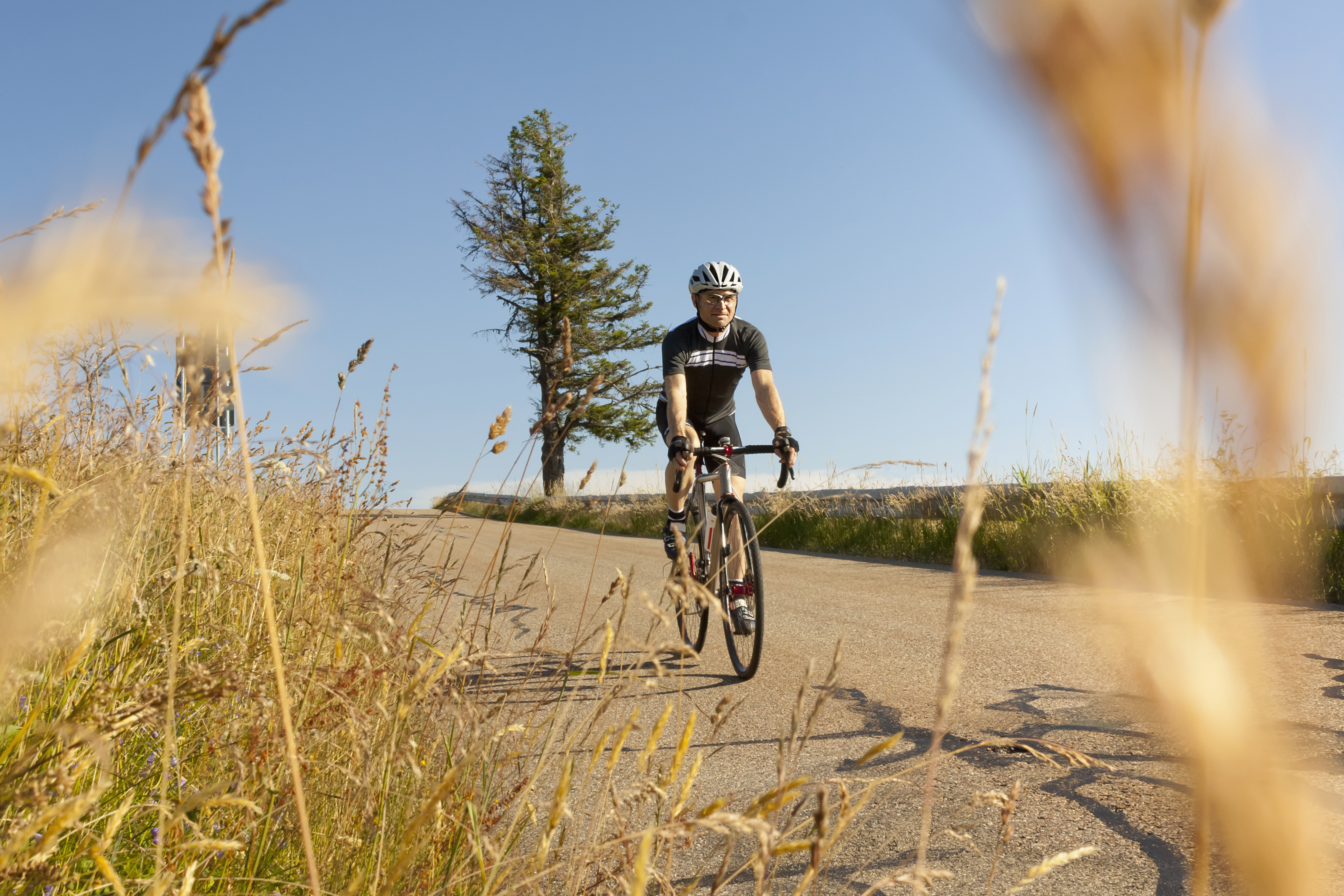 Hayfever and your riding: how to combat it as the pollen strikes
Hayfever and your riding: how to combat it as the pollen strikesExplanations, medications and holistic measures to make your spring and summer riding more enjoyable
By James Shrubsall
-
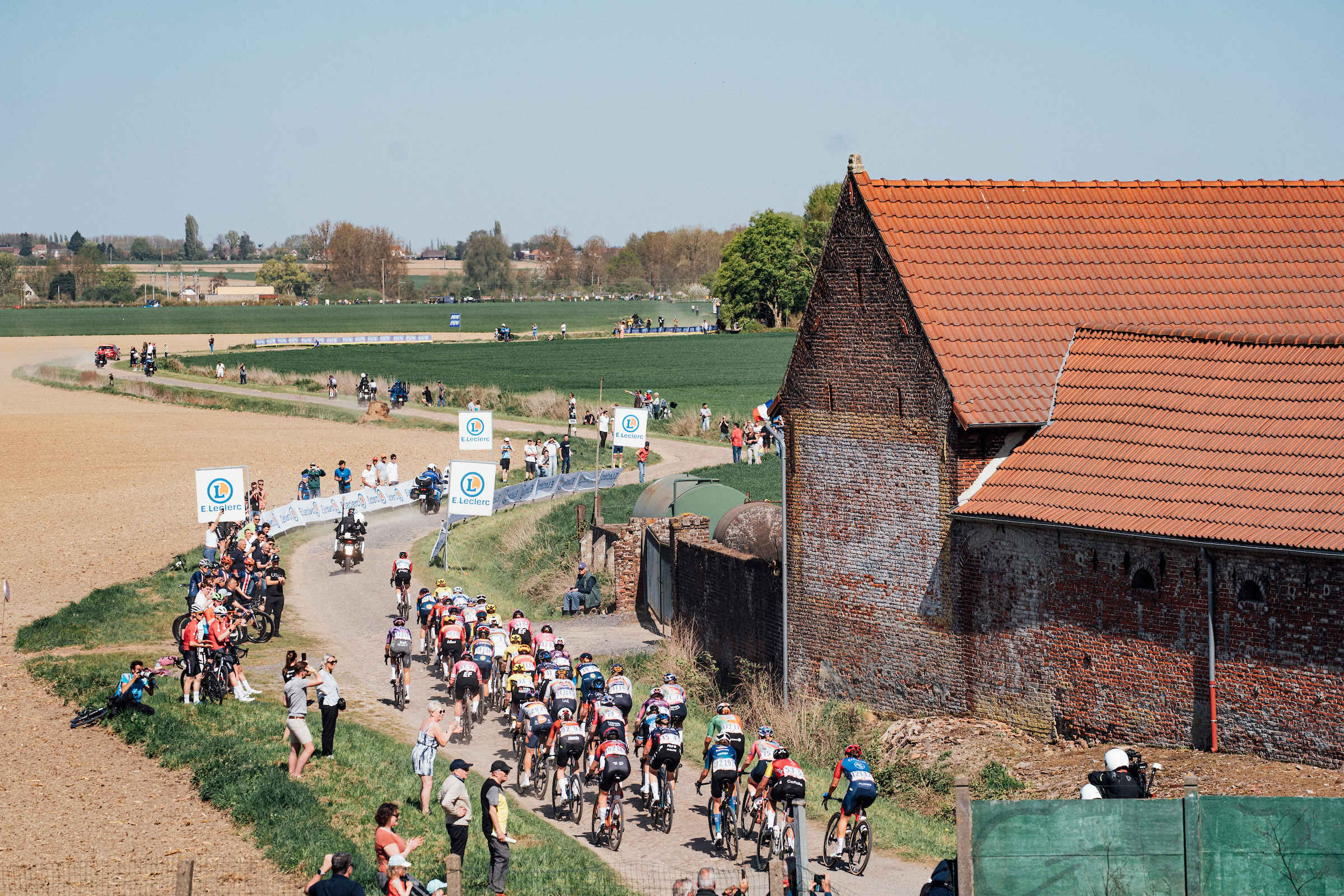 I went to Paris-Roubaix Femmes and was shocked at how it is still treated as secondary to the men’s race
I went to Paris-Roubaix Femmes and was shocked at how it is still treated as secondary to the men’s raceThe women’s version of the Hell of the North is five years old, but needs to be put more on equal footing with the men
By Adam Becket